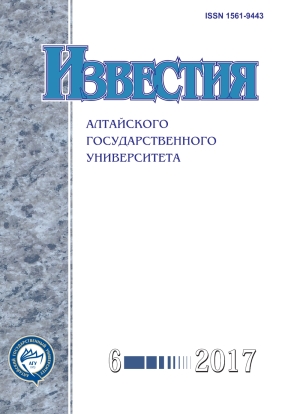The Concept and the Elements of the Criminalistics Characteristics of Violations of Traffic Rules by a Person Subjected to Administrative Punishment
Abstract
The article makes an attempt to formulate the concept of criminalistics characteristics of violations of traffic rules by a person subject to administrative punishment, as well as to reveal its elements. Analysis and correlation are given to the views of criminologists on the concept and content of elements of the criminalistic characteristics of crimes of a separate type (group). It is emphasized that the criminalistic characteristics of certain types of crimes play an important role in the disclosure and investigation of criminal acts and its study is always topical among forensic scientists. The author proposed to include in the criminalistics characteristics of violations of traffic rules by the person subjected to administrative punishment the following elements: data on the identity of the offender, the manner of committing the crime and the situation of committing the crime. In order to identify the elements of the criminalistics characterization of violations of traffic rules by a person subjected to administrative punishment and their interrelations, the author conducted a study of preliminary investigation materials and criminal cases of the territorial bodies of the Ministry of Internal Affairs of the Russian Federation located in the Altai Territory.
DOI 10.14258/izvasu(2017)6-21
Downloads
Metrics
References
О Транспортной стратегии Российской Федерации Распоряжение Правительства РФ от 22.11.2008 №1734-р (ред. от 11.06.2014) // СЗ РФ. — 2008. — № 50. — Ст. 5977; СЗ РФ. —2008. — № 52 (ч. 2) (поправка).
О внесении изменений в отдельные законодательные акты Российской Федерации по вопросу усиления ответственности за совершение правонарушений в сфере безопасности дорожного движения федеральный закон Российской Федерации от 31.12.2014 № 528-ФЗ // СПС «Кон-сультантПлюс».
Князьков А.С. Криминалистика : курс лекций. — Томск, 2008.
Александров И.В. Уклонение от уплаты налогов: основы криминалистической характеристики. — СПб., 2011.
Яблоков Н.П. Криминалистическая характеристика преступлений как составная часть общей криминалистической теории // Вестник МГУ Сер. : Право. — 2000. — № 2.
Каневский Л.Л. Дискуссионные проблемы сущности типовой криминалистической характеристики преступлений и ее использования в процессе расследования // Вестник криминалистики. — 2002. — Вып. 1 (3).
Егорышева Е.А. Дискуссионные проблемы криминалистической характеристики преступления // Вестник ВЭГУ — 2006. — №1.
Каплун Д.Д. Понятие категории «Криминалистическая характеристика» в современной криминалистике // Исторические, философские, политические и юридические науки, культурология и искусствоведение. Вопросы теории и практики. — 2013. №5 (31) — Ч. 1.
Ковалев А.В. Криминалистическая характеристика преступлений в области охраны жизни и здоровья работников в процессе их производственной деятельности // Актуальные направления развития криминалистической методики и тактики расследования преступлений. — М., 1978.
Шебалин А.В. Расследование хищений средств сотовой связи : дис. ... канд. юрид. наук. — Томск, 2010.
Copyright (c) 2017 М.О. Ясенева

This work is licensed under a Creative Commons Attribution 4.0 International License.
Izvestiya of Altai State University is a golden publisher, as we allow self-archiving, but most importantly we are fully transparent about your rights.
Authors may present and discuss their findings ahead of publication: at biological or scientific conferences, on preprint servers, in public databases, and in blogs, wikis, tweets, and other informal communication channels.
Izvestiya of Altai State University allows authors to deposit manuscripts (currently under review or those for intended submission to Izvestiya of Altai State University) in non-commercial, pre-print servers such as ArXiv.
Authors who publish with this journal agree to the following terms:
- Authors retain copyright and grant the journal right of first publication with the work simultaneously licensed under a Creative Commons Attribution License (CC BY 4.0) that allows others to share the work with an acknowledgement of the work's authorship and initial publication in this journal.
- Authors are able to enter into separate, additional contractual arrangements for the non-exclusive distribution of the journal's published version of the work (e.g., post it to an institutional repository or publish it in a book), with an acknowledgement of its initial publication in this journal.
- Authors are permitted and encouraged to post their work online (e.g., in institutional repositories or on their website) prior to and during the submission process, as it can lead to productive exchanges, as well as earlier and greater citation of published work (See The Effect of Open Access).








